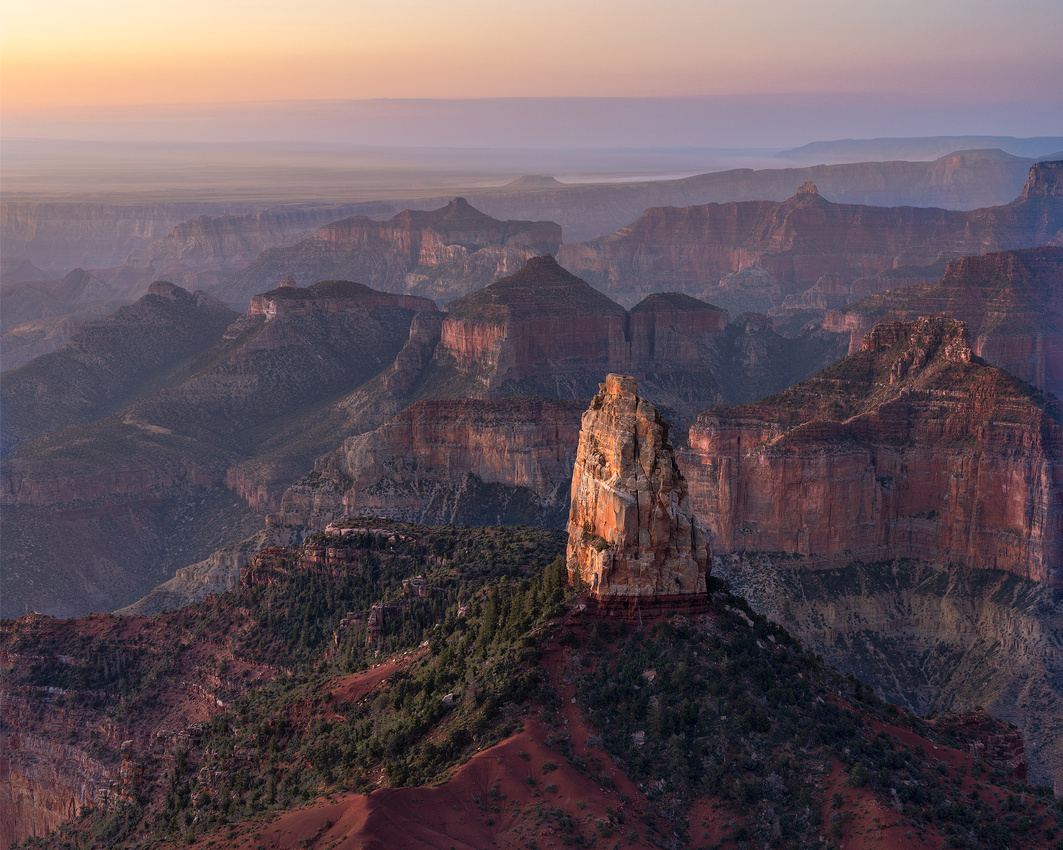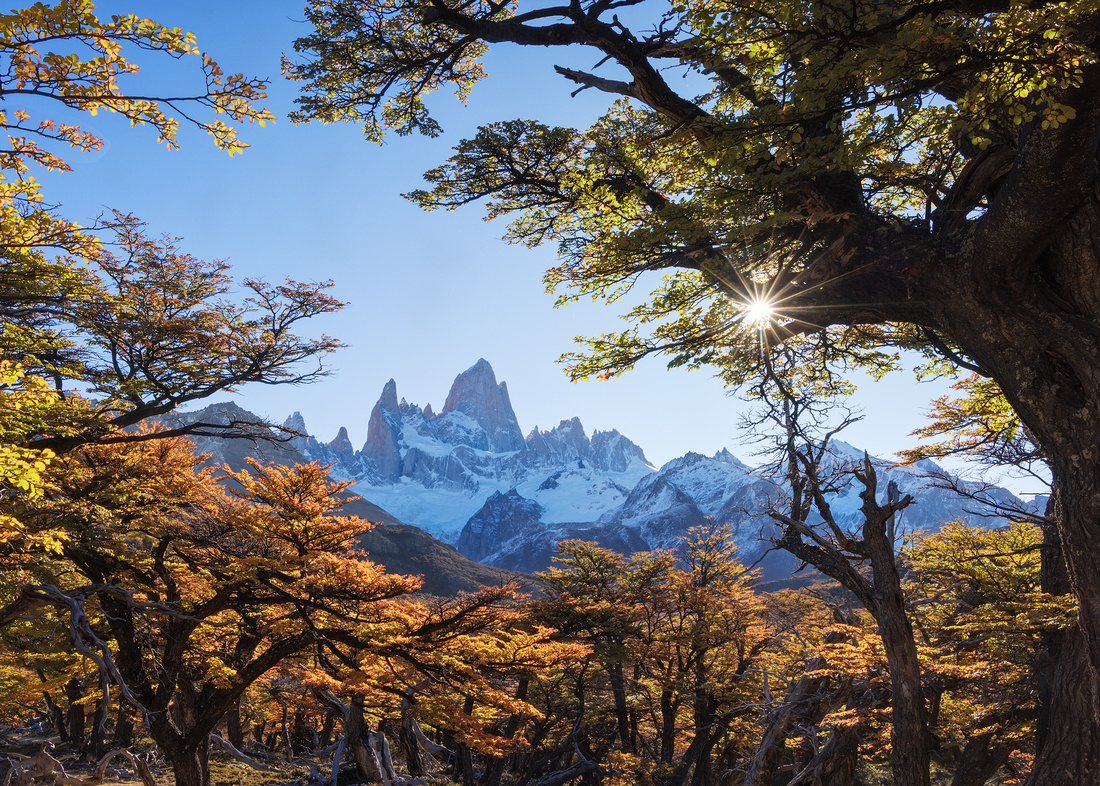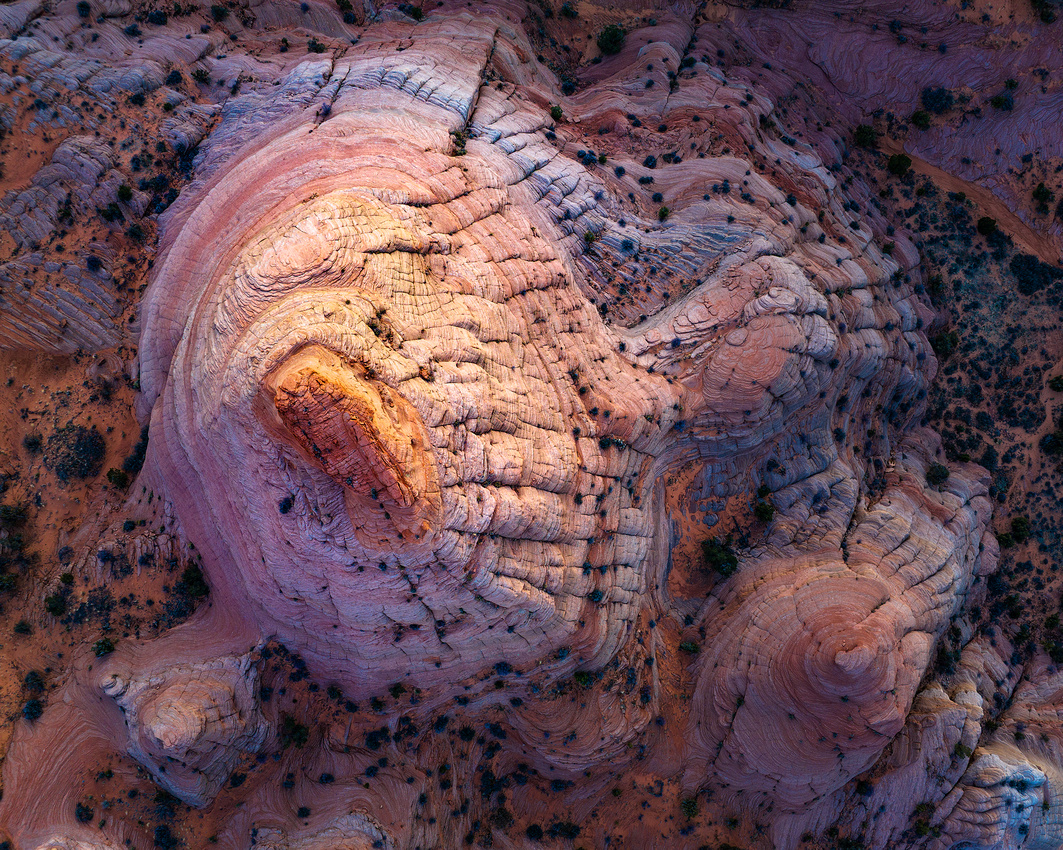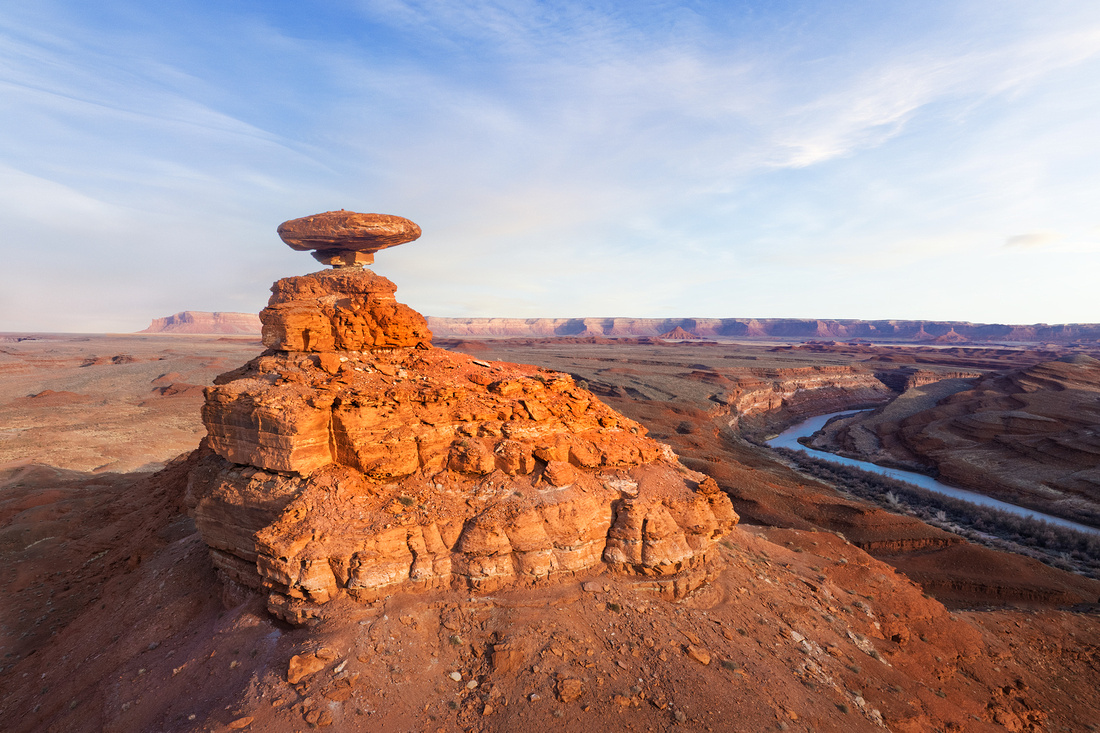Welcome to the landscape photography blog by Chuck Derus. Thanks for looking and for your comments!
The Quiet Side


Have you been to the Grand Canyon? Given its popularity, I’m guessing that most Friday Photo followers have visited the Park. Last year, it was ranked as the third most-visited National Park, behind Great Smoky Mountains National Park and Zion National Park.
The South Rim attracts almost all the visitors coming to view the Grand Canyon’s display of 1.8 billion years of geology. Fewer than 2 percent of the Park’s nearly 5 million visitors a year drive the additional five hours and 212 miles to the North Rim.
The North Rim (“the quiet side”) of the Grand Canyon is a wholly separate experience. It is a more remote, rugged and individual opportunity to see what John Wesley Powell (geologist, U.S. Army soldier, explorer of the American West, and second director of the U.S. Geologic Survey) described as “ledges and cliffs where the soaring eagle is lost to view before it reaches a summit.”
The North Rim, unlike the South Rim, allows you to see all the way down the mile-long slit in the earth to where the Colorado River runs. One thousand feet higher, the North Rim offers the three best comprehensive views of the Canyon: Toroweap, Point Sublime, and Cape Royal. Point Imperial is another impressive viewpoint.
Point Imperial
This is the highest point on the entire rim of the Grand Canyon. At an elevation of 8,803 feet, it’s the northernmost boundary of the Park.
From Point Imperial, visitors have breathtaking views of the Painted Desert and the eastern end of Grand Canyon. This is the area where the canyon transforms from the narrow gash of Marble Canyon to the more open and dramatic "grand" canyon. Layers of red and black Precambrian rocks add contrast and color.
Mount Hayden is the dominant structure visible from the Point. This 8,362-foot summit is one-half mile to the Southeast. It towers 5,000 feet above the bottom of Nankoweap Canyon.
It’s named for Charles T. Hayden (1825–1900), an Arizona pioneer influential in the development of the Arizona Territory. He is known as the "Father of Tempe,” and established Arizona State University.
The summit is composed of cream-colored, cliff-forming, Permian Coconino Sandstone caprock. This sandstone is the third youngest of the strata in the Grand Canyon, deposited a mere 265 million years ago as sand dunes. Below this lies reddish, slope-forming Permian Hermit Formation, which in turn overlays the Pennsylvanian-Permian Supai Group.
I’m not sure the height is conveyed by my photo. For scale, here’s an image of two climbers atop Mount Hayden from John Boyd shot this photo of us on the summit of Mount Hayden


The Shot
I was at the North Rim in August of 2023 with Steve Horne, Allan Fischer, and John Tarsha, all members of Naperville’s Photogenesis Camera Club. Our objective that morning was a Point Imperial sunrise image.
We were alone that morning. Steve and I climbed over the railing for a better view on a ledge below. Allan and John opted for a more secure perch on the viewing platform. Just as the sun was illuminating Mount Hayden with the multiple atmospheric layers in the background, I knew I had my image.
Afterwards, it was back to the North Rim Lodge for coffee and a hot breakfast.


Steve Horne and me after sunrise, courtesy of Allan Fischer
Wish me luck; I’m in the field chasing storms over the next two weeks. The next Friday Photo will be June 20.
Thanks for looking,
Chuck Derus
Up North


To Minnesotans, "Up North" is more than a direction. It’s a way of life. Northern Minnesota is a land of lakes, forests, cabins, resorts, and campsites that evoke pleasant memories of family and friends. Mosquitoes, not so much.
Some say that Up North began in the 1920s when the logging industry left Northern Minnesota. To keep the economy growing, the hospitality industry began marketing the region as a place to fish, boat, sunbathe and swim. And automobiles made getting there easy.
Geographers call it a perceptual region. It's a sense of place brought on by something you see or imagine. Suzanne Kindler says it well.
"It's the place people go to escape, a place made of cabins, pine trees and lakes. But no matter how far you drive, there's no sign to say, ‘You've Arrived,’ so just follow your heart until you find...your special place that brings peace of mind, as you breathe in the air and unwind, your cares are all left behind. It's no mystery where the Northwoods start...When you arrive ‘Up North’ you'll know it... in your heart."
Growing up in Minneapolis, I remember going Up North on multiple occasions as a child and young adult. Swimming, canoeing, fishing, and water skiing in lakes surrounded by pine trees are some of my fondest memories.
Later, my parents treated our young family twice to vacations at Ruttger’s Bay Lake Lodge near Deerwood, Minnesota.


My parents Leo and Emily Derus, daughter Caroline, wife Christine, and son John at Ruttger’s in June 1984
It’s the resort we now visit each summer with our children and grandchildren.


July 2023 at Ruttger’s. Back Row: Jim Cook, Caroline Derus Cook, Me, Christine, Blake Weis, Lisa Derus, Cathy Derus, John Derus. Front row: Ben and Josh Cook, Leo Weis, Alex, Cecilia and Monica Derus. A photo today would also include Dottie and Frankie Weis.
The Shot
The North Shore of Lake Superior is among my favorite places Up North. So, when I have a photographic excuse to return, I take it.
In August of 2023 I was in Grand Marais, Minnesota. While there, I drove to nearby Devil Track Lake for sunset. As the colors in the sky intensified and the loons began to call, I knew in my heart that I was Up North.
Thanks for looking,
Chuck Derus
Severley Clear


Tourists love clear blue daytime skies. Just ask any visitor heading out for a day of sightseeing after breakfast. They are usually giddy, exclaiming “What a gorgeous day!”
Photographers, not so much. We want clouds, especially colorful clouds. Photographers oftentimes describe those clear blue photographically frustrating skies as “severely clear.”
So, what do photographers do on severely clear days? They are often the perfect conditions for black and white photography. Generations of photographers have turned blue skies into deep, rich blacks in monochrome images.
For color photographers, you can minimize or eliminate the sky. And you can look for a sun star or the moon to add visual interest and weight to your composition. Also, you can pair it with a complimentary color such as yellow. Finally, you can head for the shade and shoot into the sun.
The Shot
In April of 2024 I was in Argentina’s Patagonia region with my friend and fellow photographer, Jon Christofersen. A 24-hour travel delay caused us to miss our first photo shoot near the small mountain village of El Chaltén.
But we arrived in time for the next morning’s photographic opportunity. We took the 2.5-mile hike with an 1,100 elevation gain to the gorgeous Mirador Fitz Roy overlook with the Andes Mountains in the background.


It was a challenging relentless uphill trek for me. I swear I heard my Apple Watch ask, “Are you trying to kill yourself?” 😊
Arriving, we found ourselves facing severely clear conditions. I headed for the shade looking for ways to minimize the sky. Luckily, there were three compositions that featured colorful fall foliage framing the mountains.
In addition, the sun was making its way down into the tree branches, creating the possibility for a sun star to add visual interest. And after waiting for a couple of hours, everything came together.
I tried three framing compositions featuring a sun star, but this was my favorite. After taking this shot, I simply enjoyed watching the sun drift downwards to the jagged horizon of the Andes Mountains. After sunset, we began the hike back to the hotel and enjoyed a hearty dinner.
Thanks for looking,
Chuck Derus
Mexican Hat
In the southwest corner of Utah, there’s a distinctive 300-foot-tall rock formation. A 60-foot in diameter, 12-foot-thick sombrero-shaped orange rock perches precariously atop a puny pedestal of shale and siltstone.
It resembles an upside-down sombrero, leading to the name Mexican Hat.
This uniquely named formation is the result of different rates of erosion and weathering. The softer layers of shale and siltstone eroded faster than the overlying more resistant sandstone cap. Such formations are usually temporary in geological terms, and continued erosion will eventually topple the Mexican Hat.
If you want to visit, the formation is in the northeast edge of the town of Mexican Hat, Utah. The town is on the San Juan River at the northern edge of the Navajo Nation's border. The population was 20 in the 2020 census.
The Shot
In the Spring of 2023, my friend and fellow photographer Jon Christofersen and I were in Mexican Hat for drone photography. We launched our drones next to this formation to a destination about a mile away.
After successfully completing our dawn drone mission, we put in a fresh battery and decided to explore this unique feature. Early morning light still warmed the rocks, and the nearby San Juan River flowed in the distance.
After taking several orbits around the Hat, I decided that this composition pleased me the most.
Thanks for looking,
Chuck Derus
Perspective


“A good photograph is knowing where to stand.”
In this quotation, Ansel Adams is talking about perspective. Positioning the camera differently impacts the viewer differently.
I’ve been known to lay face down in the mud, stand on my tippy toes on a boulder, or position my camera inches above the water to gain perspective. Until the advent of drones, obtaining an aerial perspective was financially out of my reach.
In 1858, Gaspard-Félix Tournachon, better known as Nadar, took the first aerial photograph. He worked from a tethered balloon over the French village of Petit-Becetre. These initial photographs haven’t survived. But his pioneering spirit laid the groundwork for today’s aerial and drone photography.


By Honoré Daumier / Adam Cuerden
The oldest surviving aerial photograph was taken by James Black and Samuel King on October 13, 1860. It depicts Boston from a height of 2,000 feet.


Other platforms followed balloons. Kites were first used for aerial photography in 1882. Then in 1909, an airplane was used to film a short movie over Rome. The use of aerial photography aboard planes rapidly matured during World War I.
There were other attempts to make aerial photography more affordable and accessible.


www.amusingplanet.com
In the early 1900s, German apothecary Julius Neubronner was using carrier pigeons to deliver medications from his pharmacy to a nearby sanatorium. He had the brilliant idea of creating a tiny camera to strap to the breast of his pigeons. With a bit of tinkering, he built a 75-gram miniature camera (the legal load limit for pigeons) capable of taking 30 exposures. His images were so impressive he was granted a patent.
In 2013, SZ DJI Technology Co., Ltd., better known as simply DJI, introduced its first entry level consumer drone. Now, nearly everyone can take to the skies with a camera. And 90% of those cameras are DJI drones.
The Shot
In 2023, my friend and fellow photographer Jon Christofersen and I headed for the Utah Badlands for a week of drone photography. Arriving a day early, we had a chance to return to an area of eroded sandstone mounds near Page, Arizona informally called the Teepees. We were there in 2008 on one of our first landscape trips.

 From my 2008 trip to the Teepees
From my 2008 trip to the Teepees
This time, I took to the air with my drone looking for a different perspective. I was aimed straight down at the Teepee mounds scouting for a pleasing shape painted with the light of the setting sun.
After a few attempts, I thought that this image would cause the viewer to pause and wonder just what the heck they were looking at.
Thanks for looking,
Chuck Derus
